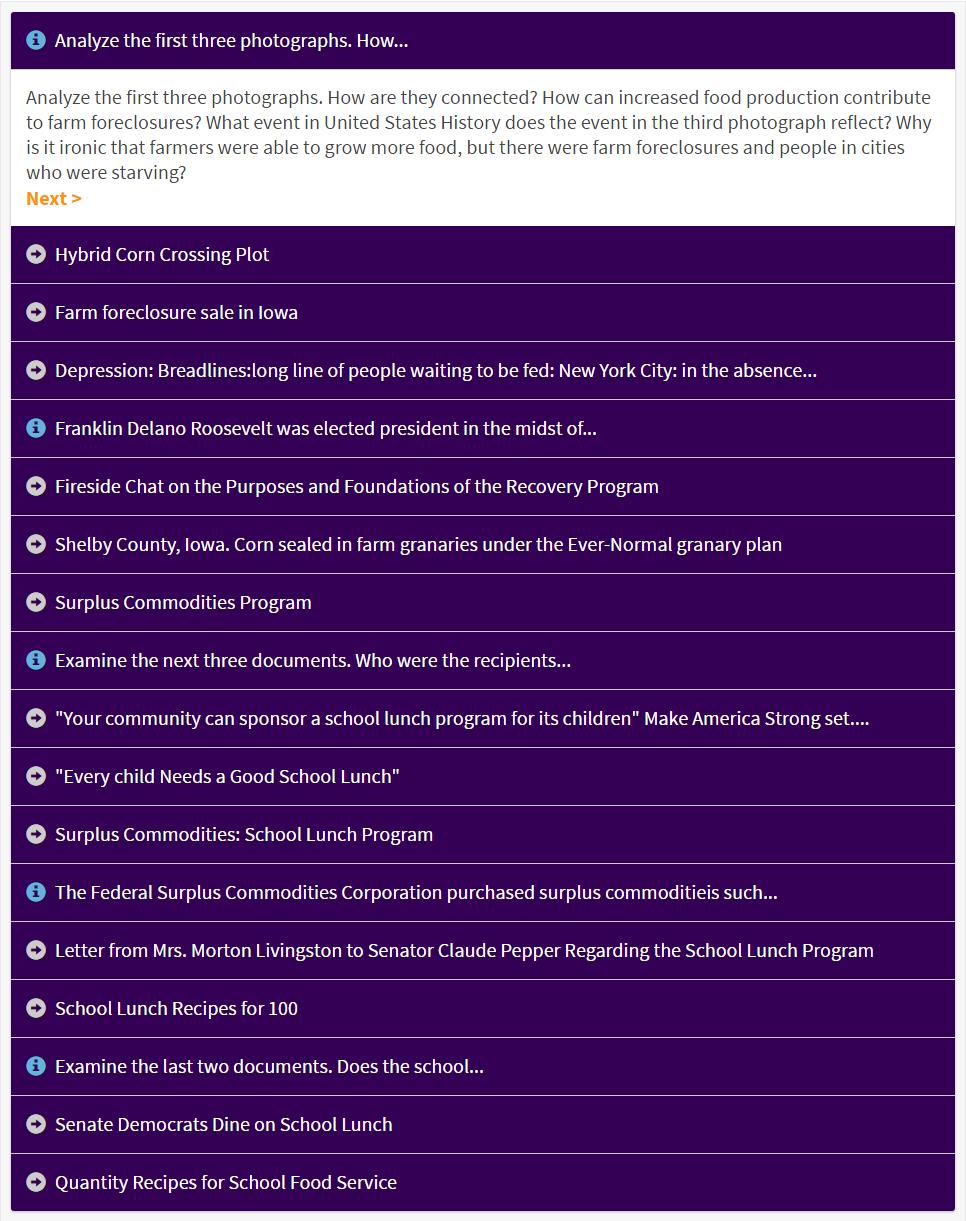Students will draw upon the visual and textual data presented in photographs and documents to gain an understanding of how the federal school lunch program is a direct result of the Great Depression, how it became a permanent part of the federal budget, and how the program has changed over its history.
This activity provides both specific content and asks students to draw connections that go beyond observation to analysis and synthesis.
Suggested Teaching Instructions
Learning Objectives
Students will analyze records from the Great Depression era and comprehend the connection between events in the Great Depression that led to the School Lunch program. Students will be introduced to the concept of supply and demand, and its impact on commodity prices. Students will examine programs put in place by the Franklin D. Roosevelt administration to address the impact of the Great Depression.
Instructions
This activity may be used to introduce the impact of the Great Depression on farmers, the unemployed in cities, and children, as well as the programs introduced by President Franklin Roosevelt to address these problems. The activity can be completed as a class, in small groups, in pairs, or individually. For grades 6-12. Approximate time needed is 60 minutes.
Before starting the activity, share the information in the following four paragraphs with students and ask them to consider how the two challenges identified could be met.
Formal and informal school lunch programs have existed in the United States since the mid-nineteenth century. In the beginning, school lunch programs were supported by charitable organizations such as parent-teacher associations, school districts, and individuals. With the advent of the Great Depression in the early 1930s, concern increased about hunger and malnutrition among school children.
Many state, municipal, and local governments initially adopted legislation to enable schools to deliver the noonday meals to children. As the Depression worsened, however, most state and local governments could no longer fund the increasingly heavy burden of providing lunches for students, and charitable organizations did not have the necessary resources.At the same time, farmers in many states were producing a surplus of crops. The surplus drove down the price farmers received for the commodities they produced.The Franklin D. Roosevelt administration was faced with numerous challenges resulting from the Great Depression, including feeding school children who were facing malnutrition, and assisting farmers who were overproducing certain commodities causing prices to decline. As a class, discuss possible solutions to the problems noted above, then open the activity and direct students to examine the first three photographs (including the information available by clicking on View Documents Details).
Model careful document analysis with these documents. As a class, answer the questions in the first box. The class may continue the activity as a group, or students may go through the activity in small groups or individually.
Upon completion, conduct a class discussion on the impact of the Great Depression on the school lunch program. Ask the students what other programs started during the Great Depression still exist today. Other programs include: agriculture subsidies,
the Federal Deposit Insurance Corporation,
the Security and Exchange Commission (SEC), and
the Social Security program.
For more information about the School Lunch program, see the article “Letter about the School Lunch Program” in the September 2009 National Council for the Social Studies (NCSS) publication
Social Education.
For more information about the featured documents, follow the links below.





